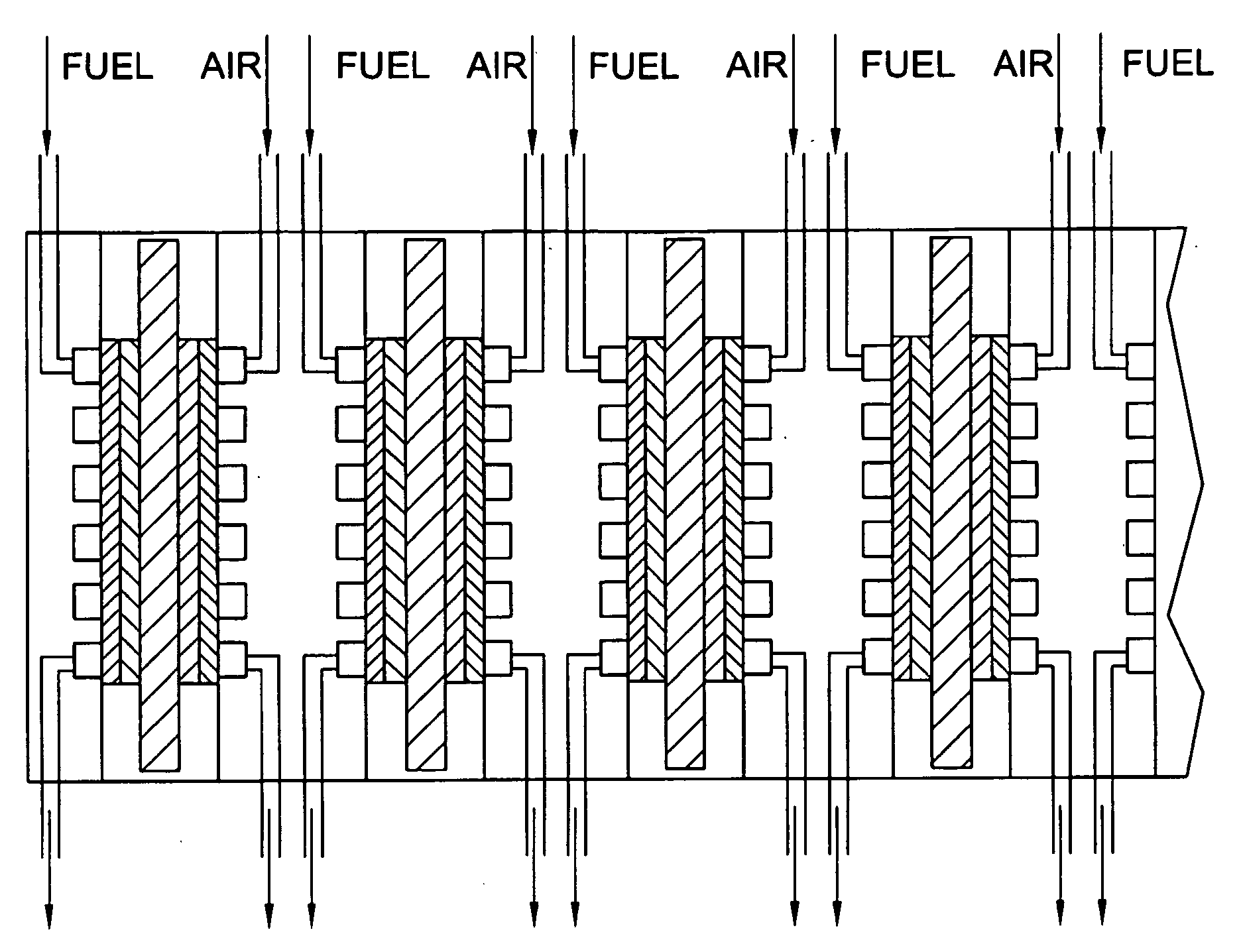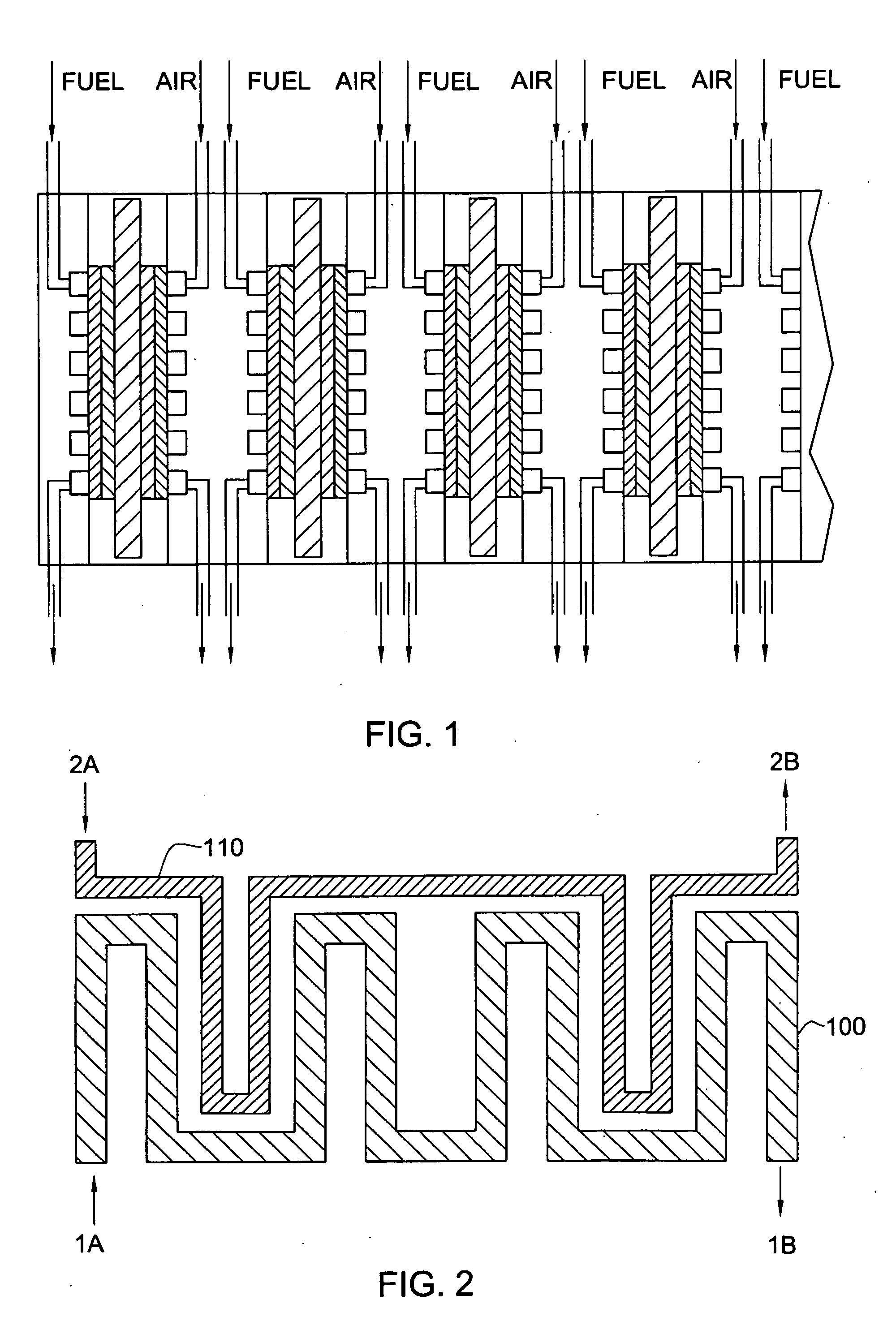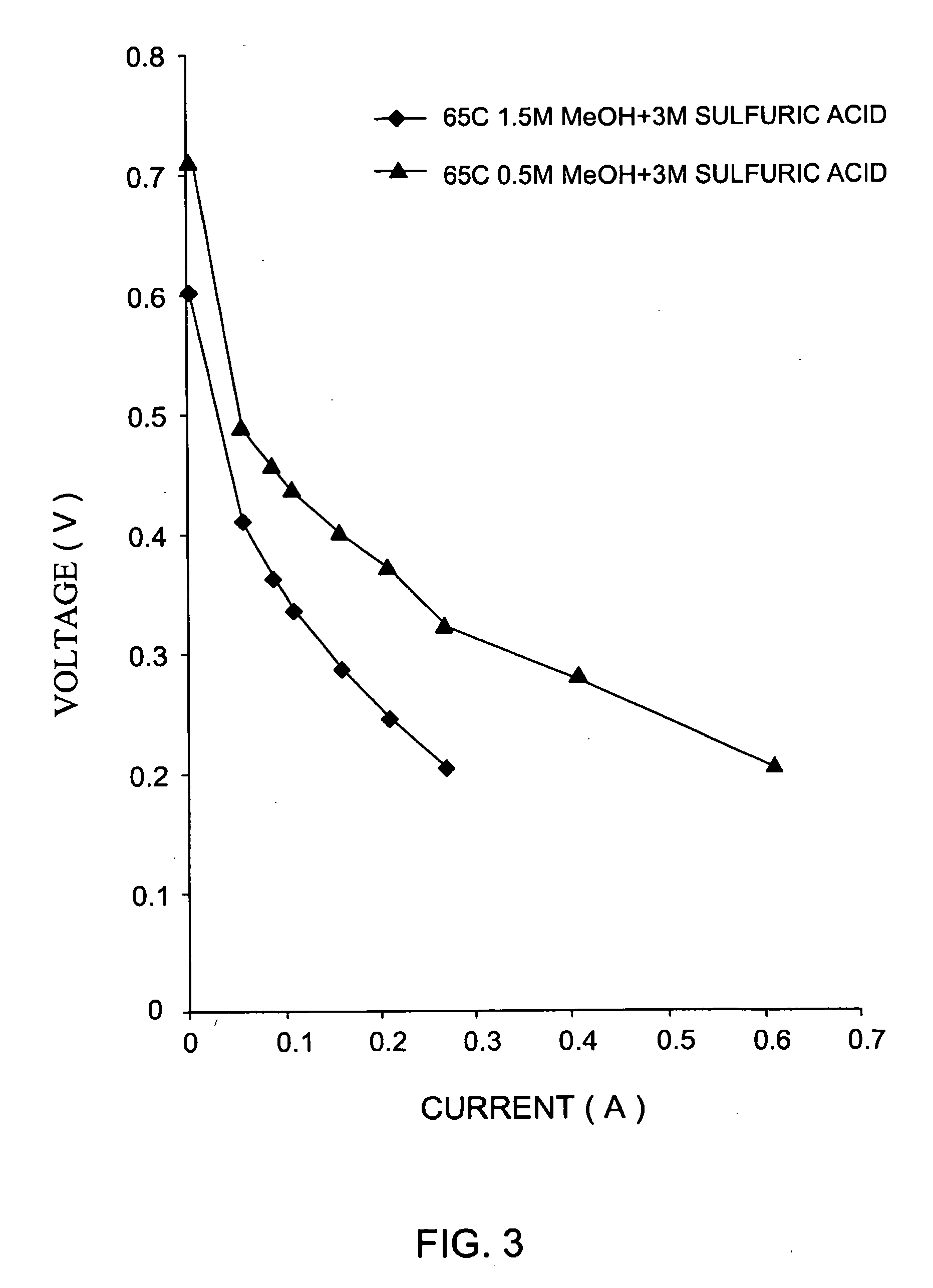Fuel cell with proton conducting membrane
a proton conducting membrane and fuel cell technology, applied in the field of electric cells, to achieve the effect of reducing the crossover curren
- Summary
- Abstract
- Description
- Claims
- Application Information
AI Technical Summary
Benefits of technology
Problems solved by technology
Method used
Image
Examples
example 1
a) First Fuel Cell Configuration
[0104]A fuel cell housing was fabricated from synthetic graphite plates purchased from Globetech Inc., in which a flow field was engraved.
[0105]The anode was formed using a platinum-ruthenium ink that was spread on a carbon fiber sheet commercially available from Toray TM paper. Several types of inks were prepared, as follows:
1. Type A was prepared by mixing 600 mg of 60% Pt:Ru on Vulcan XC-72 (purchased from E-Tek Inc), 60 mg Kynar 2801 PVDF, 0.26 ml propylene carbonate (PC) and about 1.5 ml of cyclopentanon;
2. Type B was prepared by mixing 600 mg of 20% Pt / 10% Ru / Vulcan C-72 (purchased from ElectroChem, Inc), 60 mg Kynar 2801 PVDF, 0.38 ml propylene carbonate (PC) and about 1.5 ml of cyclopentanon;
3. Type C was prepared by mixing 600 mg of 20% Pt / 10% Ru / Vulcan XC-72 (purchased from ElectroChem, Inc), 60 mg Kynar 2801 PVDF, 60 mg Aerosil 130 (purchased from Degussa AG), 0.42 ml propylene carbonate (PC) and about 1.5 ml of cyclopentanon.
[0106]The inks...
example 2
[0115]The crossover was measured by two test methods:
1. Using the regular configuration of the fuel cell but using nitrogen instead of oxygen at the anode and methanol in 3M H2SO4 at the cathode. The current (at 1V) measured is a product of the oxidation of the methanol that penetrated through the PCM from the cathode to the anode side.
2. The same as in Method 1 above but both electrodes were painted with Pt-Ru ink and the crossover current was calculated in the same way as in 1.
[0116]The crossover currents are summarized in Table 1. The crossover of 1 mole / liter methanol was measured at 50.65 and 75° C.
(I) TABLE 1Crossover current densities at different temperatures and testmethods (1 M methanol and 3 M sulfuric acid in H2O), and a PCMwith and 24% PVDF, 16% SiO2 (w / w), hot pressed at 70° C.The PCM thickness was 300 micron and it was 60% porous.Test method 1Test method 2CurrentCellCurrentCellTemperaturedensityVoltagedensityVoltage[° C.][mA / cm2][v][mA / cm2][v]502611316518.517531.81
[01...
example 3
[0121]In order to improve performance, another methanol fuel cell was manufactured with the use of pure metal catalysts, instead of carbon supported catalysts. A cathodic catalyst ink was prepared by the following process: A nano powder Pt (Pt black, purchased from “Johnson Matthey”), Teflon™ emulsion and Nafion™ 5% solution were combined in the following weight proportions: 60% Pt, 25% Teflon emulsion and 15% Nafion. First the Pt powder and the Teflon emulsion were mixed by sonication for 15 minutes. After two sonication periods, the ink obtained was placed on a magnetic stirrer for at least one night.
[0122]An anodic catalyst ink was prepared by the following process: A Pt:Ru nano powder (Pt:Ru black 50% purchased from “Johnson Matthey”) and PVDF were mixed in the following weight proportions: 91% catalyst powder and 9% PVDF. Propylene carbonate was added in an amount equal to 30-70% of the catalyst volume, then cyclopentanone was added and the ink obtained was stirred for at least...
PUM
| Property | Measurement | Unit |
|---|---|---|
| crossover current density | aaaaa | aaaaa |
| crossover current density | aaaaa | aaaaa |
| crossover current density | aaaaa | aaaaa |
Abstract
Description
Claims
Application Information
 Login to View More
Login to View More - R&D
- Intellectual Property
- Life Sciences
- Materials
- Tech Scout
- Unparalleled Data Quality
- Higher Quality Content
- 60% Fewer Hallucinations
Browse by: Latest US Patents, China's latest patents, Technical Efficacy Thesaurus, Application Domain, Technology Topic, Popular Technical Reports.
© 2025 PatSnap. All rights reserved.Legal|Privacy policy|Modern Slavery Act Transparency Statement|Sitemap|About US| Contact US: help@patsnap.com



